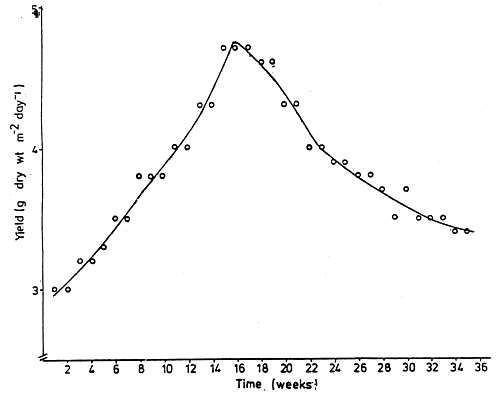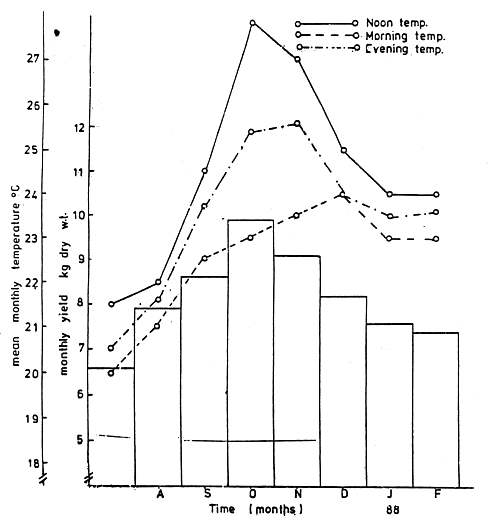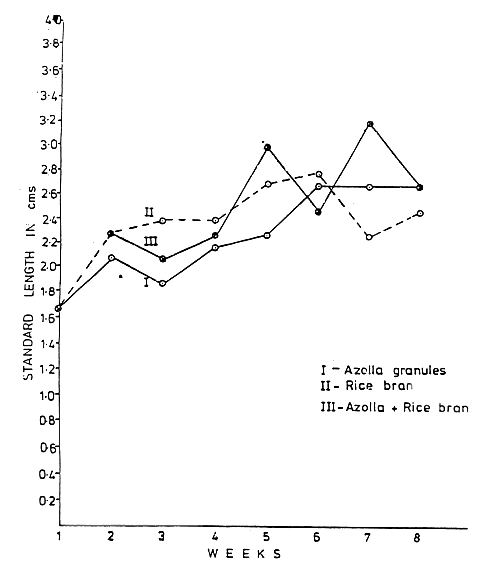
PRODUCT AND BY PRODUCT DEVELOPMENT FROM NILE PERCH
(A summary table)
by
J. Bon and J. Ogunja
Hyperlinks to non-FAO Internet sites do not imply any official endorsement of or responsibility for the opinions, ideas, data or products presented at these locations, or guarantee the validity of the information provided. The sole purpose of links to non-FAO sites is to indicate further information available on related topics.
This electronic document has been scanned using optical character recognition (OCR) software. FAO declines all responsibility for any discrepancies that may exist between the present document and its original printed version.
SMOKED PRODUCTS
| Processing Method | Hot Smoking | Cold Smoking (smoke drying) |
| Raw material | fillet (skin-on) | fillet (skin-off) |
| Dressing method (1) | trimming | trimming |
| Salting | brine (10%) | dry salt |
| Duration | short (1 h) | long (overnight) |
| Removal of salt | rinsing | soaking, scraping |
| Dressing (2) | - | slicing (thin) |
| slicing (thick) | ||
| Further treatment | - | colour bath |
| soaking, colour bath |
| Drying | short (1 h) | long (24 h) | medium (4–5 h) | |
| Temperature | 30�C | 30�C | 30�C | |
| Smoking (cold) | short (1 h) | short (2 h) | short (1 h) | very short |
| Temperature | 45�C | 50�C | 40�C | 35�C |
| Smoking (hot) | 2 h | -- | -- | -- |
| Temperature | 65�C | -- | -- | -- |
| Total time in kiln | 4 h | 26 h | 5 h | 1 h |
| Weight loss (%) | 12% | 23% | 20% (est.) | 15% (est.) |
| Keeping time | ||||
| in freezer | 1 month | 1 month | several months | |
| in fridge | 1 week | 3 days | 2 weeks | |
| Character | cooked, juicy product, ready for consumption as cold or hot starter or main dish | salt-cured product, to be cut into thin transparent slices, as cold starter (salmon-style) | weat analogue snacks, with varying salt content | |
| Price range | KSh 25–30/kg | KSh 100/kg | ||
Kisumu, 28 March 1988
FISH FEED BASED ON SILAGE OF NILE PERCH SKELETON AND AZOLLA WATERPLANT
by
P.B.O. Ochumba, J.O. Manyala and J.O. Achuku
ABSTRACT
Since dairy meal is becoming increasingly expensive in Kenya and threatens the fish rearing industry, a systematic study was initiated on the possibility of using aquatic plants and Nile perch silage. The water plants, Azolla niloticus, Lemna perpusilla and Pistia striatotis were tested as a fishmeal for Tilapia zillii and riverine fishes. Low growth rates were achieved in the tilapias. The value of the Azolla protein in fish diet is discussed in relation to dietary requirement in cultured fish. This study demonstrates that the water plant Azolla niloticus together with Nile perch silage as a supplement can be used as a complete diet for cultured fish. It is hoped that the project will help provide detailed information on the nutritional value of the water plant Azolla niloticus and its long-term susceptibility to various inclusions as a complete feed, and conduct least cost feed formulations to make recommendations as to the maximum inclusion levels.
1. INTRODUCTION
The dominance of expensive dairy meal as feed for tilapia and cultivated fish has challenged fish nutritionists for many years. Successful replacement by other protein feeds have been reported mostly of animal origin: milk, meat, krill (Visla et al., 1982). Since dairy meal is becoming increasingly expensive in Kenya and threatens the whole fish-growing industry a systematic study was initiated on the possibility of using the aquatic plants Azolla niloticus Decne and Lemna perpusilla Torrey mixed with Nile perch (Lates niloticus) silage and rice bran. It is hoped to develop through the project studies a suitable feed that can be used either as a supplementary diet in fishponds or as a complete diet in tanks based on Azolla niloticus.
The waterfern Azolla niloticus belongs to the family of Salviniales and is mainly of interest for its nitrogen-fixation, green manure and hydrogen-producing qualities (Ashton and Walmsley, 1984). The geographic distribution of the plant are the upper reaches of the Nile to Sudan, Congo, Malawi, Mozambique, Tanzania, Uganda, Zaire, and Zambia (Demalsy, 1953; Wild, 1961; Reed, 1965 and Kornas 1974). This study reports its presence in the sheltered bays and backwaters of the Sondu-Miriu River where they are protected from wind and wave action. The maximum density of Azolla layer is subject to considerable variation. Gopal (1967) reported a maximum yield of 37.8 t/ha freshweight containing 2.78 t dryweight in a temporary pond.
Azolla can double its biomass in 3–5 days (Lumpkin and Plucknett, 1980). The use of silty water is recommended to reduce dependence on fertilizers for Azolla. Trials are repeated using the plant together with rice bran and the potential use of Nile perch silage mixture.
2. MATERIALS AND METHODS
The waterplant fern Azolla niloticus was collected from the Sondu-Miriu River and grown at the Sangoro Riverine Laboratory (70 km from Kisumu) in concrete lined earthen ponds (11.45 x 26.4 m, ca 302.28 m2, depth 1.1 m). The substratum was fresh-water organic mud of clay/silt. Harvesting was done on a weekly basis using a beach seine. The harvested waterplants were sun-dried and weighed by a spring balance. Seed plant of 25 g dry weight in z was fixed in a constant area of 60 m2 (1.5 kg dryweight seed plant). Daily growth observations were made for a period of 8 months from June 1987 to February 1988. Yields are given in kilogramme dryweight. Temperature was measured with mercury in a glass thermometer.
The dried Azolla plant was ground and made into pellets using a multi-purpose food processing unit (Muller-Saarbrucken) fitted with a mixer, mincer and cutter. The feeding experiments were performed in large asbestos tanks (152 × 92 × 49 cm2) filled with river water. Each tank was stocked with 100 fry of Tilapia zillii of average size 1.7 cm. A mixture of ground Azolla and rice bran in the proportion 1:1 was also tested separately from Azolla and rice bran.
The experimental fish were fed 3% of the equivalent body weight with the tested feed three times per day. Half the volume of water in the tanks were replaced with fresh river water every three days. Freshwater was introduced into the experimental tanks on a weekly basis when six experimental fish were sampled at random. Individual standard lengths to the nearest 0.1 cm were recorded. Records were maintained of daily food intake and mortality. A series of trials of the Azolla feed on other riverine fishes: Barbus, Labeo, Clarias and Schilbe were also carried out.
3. RESULTS
The mean growth of Azolla during the experimental period was 3.4 g dryweight m-2 day-1 (range 3.0–4.7) (Figure 1). The monthly Azolla production and temperature variation are shown in Figure 2. The Azolla production varied from a minimum of 6.6 kg dryweight day-1 in July 1987 to a maximum of 9.9 kg dryweight day-1 in October 1987. Temperature variation followed a similar pattern as that of the Azolla (range 2°–28°C)
In feeding trials with the experimental feeds, it was found that Tilapia consumed Lemna and Azolla first when these plants were provided in combination with Pistia. The overall growth rates of experimental fish showed that fish fed on a mixture of Azolla and rice bran grew slightly (20.7%) faster than those fed on Azolla alone (19%) and those fed on rice bran alone (14.5%/day) (Figure 3). The decline in growth rate could be due to the low digestability of plant proteins. The chemical composition of the whole dried and ground Azolla is shown in Table 1. The mature riverine fishes kept at the Laboratory are given only Azolla feed.
4. DISCUSSION
There was a sustained production of Azolla to feed Tilapia fingerlings of 3 cm and above at the rate of 3% bodyweight (15–30 g). At the minimum rate of production of 3 g dryweight m-2 day-1, the total daily production for an area of 302 m2 is 906 g. This amount of Azolla could feed 100 fingerlings of Tilapia per day.
At a maximum production of 4.7 g dryweight m-2 day -1, this would amount to 1 420 g dryweight which could feed 160 Tilapia fingerlings/day with a daily consumption per fingerling of 9 g. The most favourable temperature for Azolla growth is between 20° and 30°C. The experimental results indicate that Azolla and rice brar can be useful as a complete feed for herbivorous fish. The locally cheap available Nile perch skeleton silage was added and tested, and was found to form a complete diet.
The low growth rates achieved in the trial experiments could be due to anti-nutritional factors that could be improved by a supplement such as Nile perch silage. Fish silage as a nutritional supplement can minimize any negative attribute from the plant Azolla. Extensive incorporation of plant proteins in cultured fish diets may be desirable since they are less expensive and more available.
REFERENCES
Ashton, P.J. and R.D. Walmsley. 1984 The taxonomy and distribution of Azolla species in southern Africa. Botanical Journal of the Linnean Society. 89:239-47
Demalsy, P. 1953 Le sporophyte et Azolla nilotica. Cellale 56:5–60
Gopal, B. 1967 Contribution of Azolla pinnata R. Br. to the productivity of temporary ponds at Varanasi. Trop. Ecol., 8:126-30
Kornas, J. 1974 The pteridophyta new to Zambia. Bull.Acad.Polon. Sci., 22:713-8
Lumpkin, T.A. and D.L. Plucknett. 1980 Azolla: Botany, physiology and use as a green manure. Economic Botany, 34:111-53
Reed, C.F. 1965 Distribution of Salvinia and Azolla in South America and Africa, in connection with studies for control by insects. Phytologia, 12:121-31
Viola, S., U. Rappaport, Y. Arieli, G. Amidan and S. Mokady. 1981 Effects of oil-coated pellets on carp (Cyprinus carpio) in intensive culture. Aquaculture, 26:49–65
Wild, H. 1961 Harmful aquatic plants in Africa and Madagascar. Kirkia, 2:1–66

Fig. 1 Production of Azolla in g dryweight m-2 day-1

Fig. 2 Variations in monthly yield of Azolla and monthly variations in temperature
GROWTH PATTERN OF TILAPIA ZILLII ON THREE FEED COMPOSITIONS

Fig. 3 Growth rules of Tilapia zillii on three experimented feed compositions
Table 1
CHEMICAL COMPOSITION OF AZOLLA NILOTICUS MIXED WITH RICE BRAN
| Azolla niloticus | Rice bran | |
| Protein | 19.1% | 12.5% |
| Carbohydrate | 3.2% | |
| Fibre | 7.2% | 16% |
| Fat | 4.0% | 1.3% |